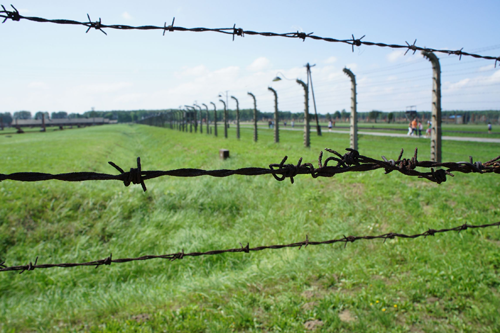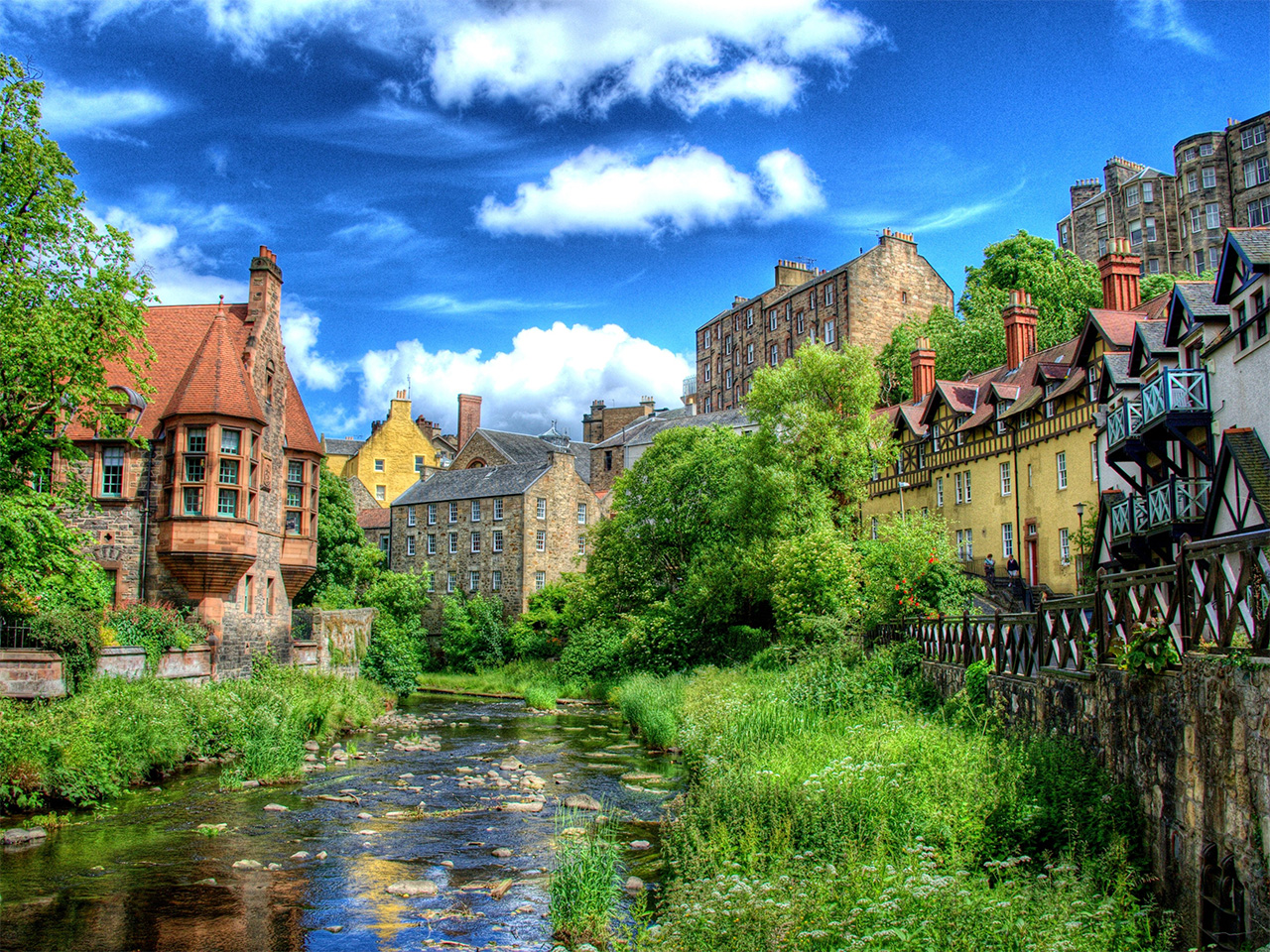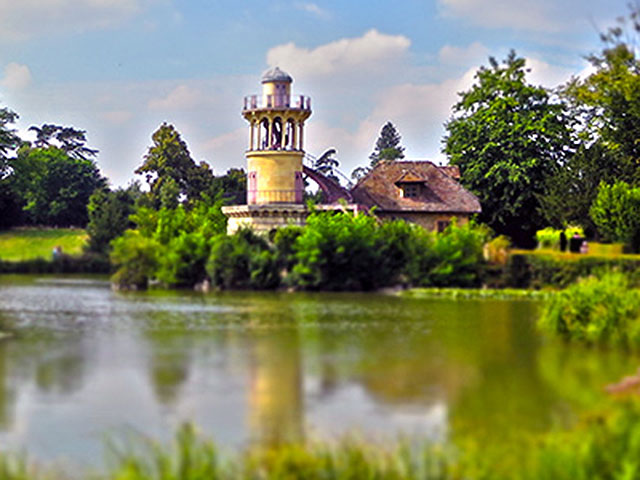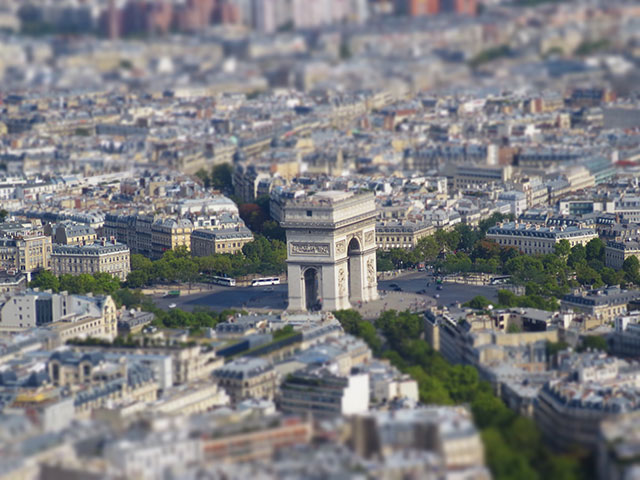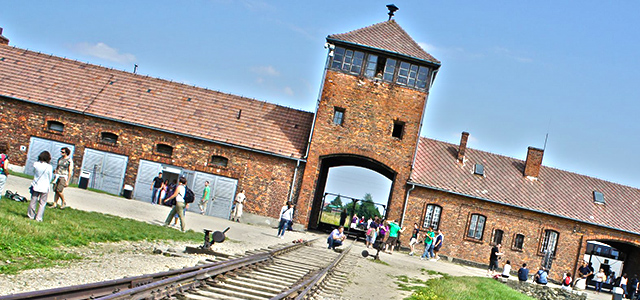
Auschwitz Concentration Camp: An aching memory lane
One of Poland’s oldest cities, Krakow’s beginnings date back to the 7th century. At the start of World War II, it became the capital of Germany’s General Government.
And just 50km from the city is the town of Oswiecim, where you can find the infamous Auschwitz concentration camp. I remember watching The Schindler’s List back in ’93, and how it left chills down my back. Of course, we have all read about World War II, but I never full absorbed the cruelty of the Nazis until the movie’s chilling portrayal of life in the concentration camp. And I knew I had to visit it some day.
For those far removed from the war, the concentration camp is devastating evidence of the dark days that consumed the lives of over one million Jews and other prisoners. It’s a sobering experience and a stern reminder on the crushing effects of war.
Getting there
Day trips can be easily arranged in Krakow. Whether you are staying in a hotel or a hostel, transport arrangement can be made at the front desk.
The shuttle trip to the Auschwitz concentration camp takes slightly under two hours and onboard the transport, there is typically a documentary on the concentration camp, setting the mood and perhaps, preparing visitors for the haunting sights ahead.
The Auschwitz concentration camp is not just one camp but a network of camps, expanded through the three years to accommodate the increasing number of prisoners. It first started as Auschwitz I, an initial concentration camp turned death camp, which was then extended with Auschwitz II–Birkenau, an extermination camp, followed by Auschwitz III–Monowitz, also known as Buna–Monowitz, a labor camp. The tour covers Auschwitz I and Auschwitz II–Birkenau.
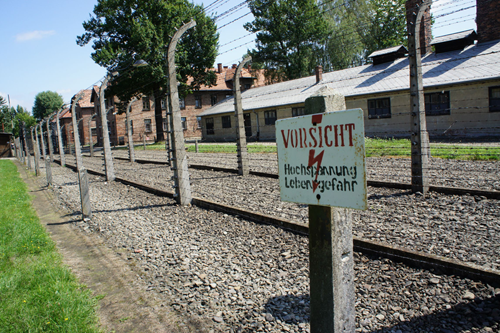
Here’s a pictorial journey through the two camps.
1. This is the entrance to the camp. Beyond the gates lie the horrors of torture and intense hardship the prisoners had to endure. The words above the gate read “Work will set you free”. Isn’t it ironic, considering the only freedom here is when death comes knocking.
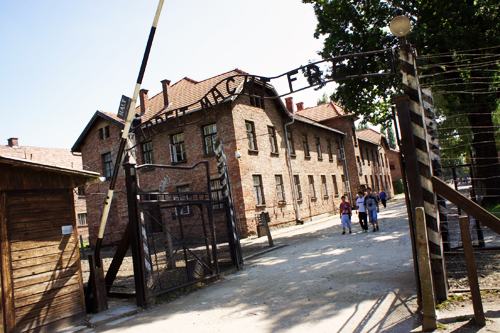
2. These are the barracks that the prisoners are housed in, they had previously been used as Polish army artillery barracks. Inside these rooms now hang pictures and belongings of the prisoners who called the camp “home”. Most of them perished here.
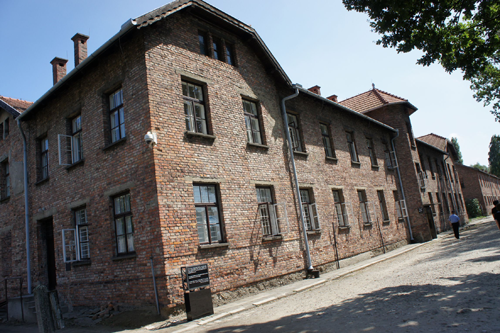
3. Images of the scenes at the concentration camp are dotted around the barracks now. This is a picture of “new arrivals” at the camp. Those deemed unfit will be asked to hit the “shower room”.
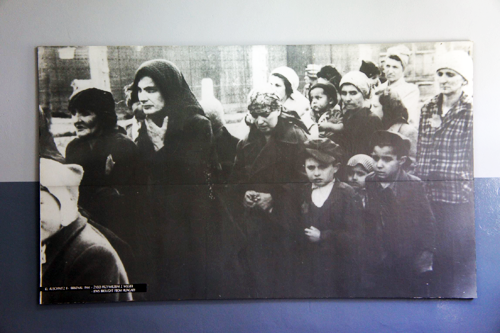
4. This group of people were told they need a shower to clean up after their travels, when in fact; they were being led to the gas chambers.
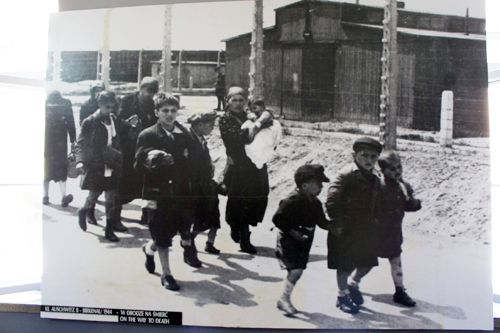
5. A sample of the pellets used to gas the victims- the Cyclone B. The name was the trade name of a cyanide-based pesticide. This is how it works: Once the chamber was full, the doors were screwed shut and solid pellets of Zyklon B were dropped into the chambers through vents in the side walls, releasing the cyanide gas.
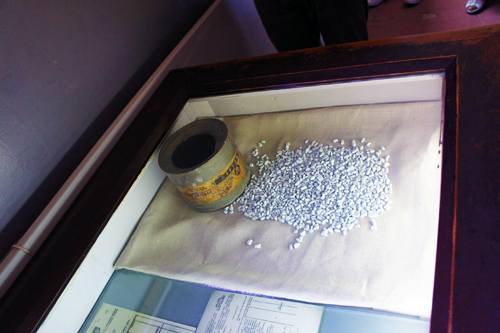
6. And this is only a fraction of the amount that was used. The gas claimed the lives of roughly 1.2 million people.
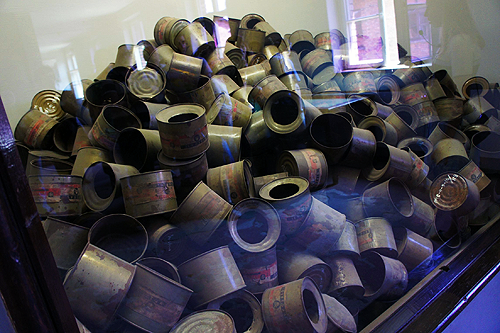
7. Some of the rooms are filled with belongings of the prisoners when they reached the camp. Many were lied to about the camp. Some prisoners even bought passage on trains bound for the camp, thinking that they are going to stay at a safe and temporary refugee camp, hence bringing along the most precious of their belongings with them.
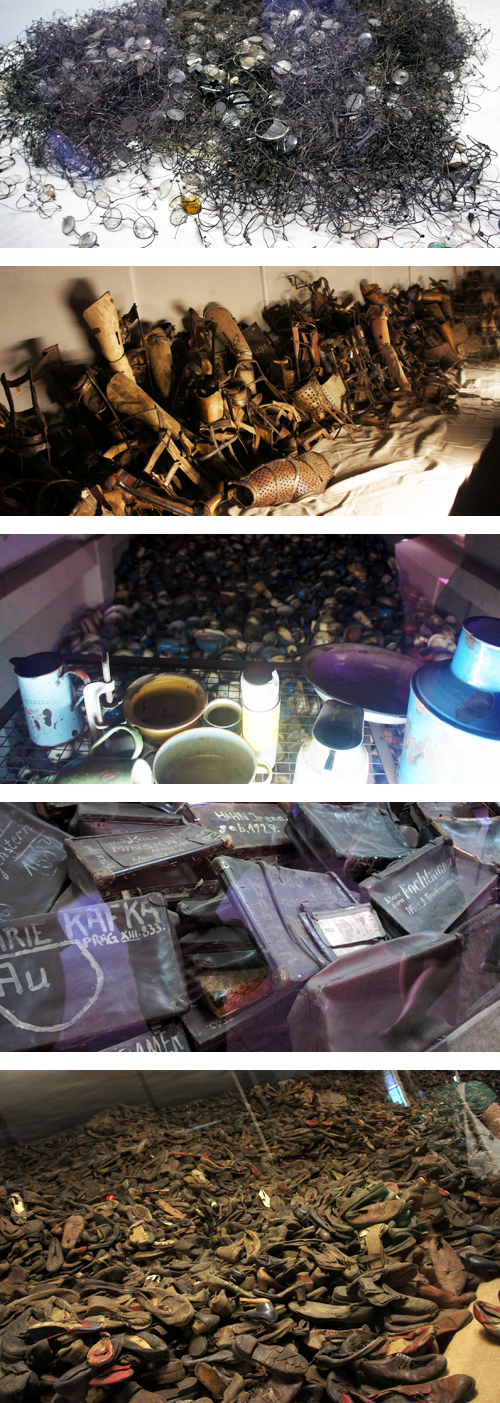
8. Along the corridors of the barracks are “mugshots” of those imprisoned in Auschwitz. Many of them died within months of entering the camp, due to torture, overworking, unsanitary hygienic conditions and lack of food.
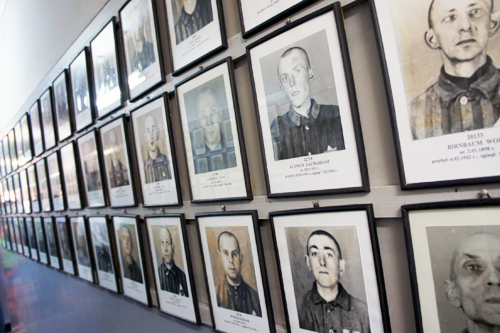
9. Even the little ones were not spared. There’s a room dedicated to the children that were housed in Auschwitz. Glass displays showcased some of their belongings, such as clothing and toys such as teddy bears which they brought with them, painting a heart-wrenching picture of the cruelties of the Nazis.
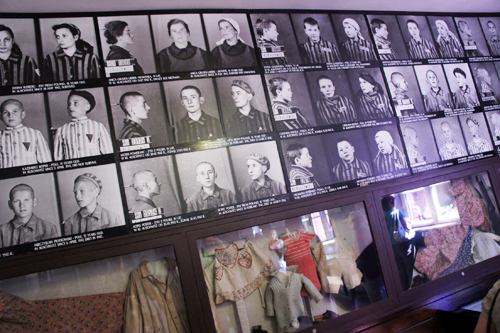
10. This bare courtyard was empty for a reason. Flanked by two storeyed buildings on either side, it’s framed by brick walls on the remaining sides, with a door that’s almost always locked, unless there’s a reason to open them. And only reason the courtyard was opened, was for prisoners to be led in and shot.
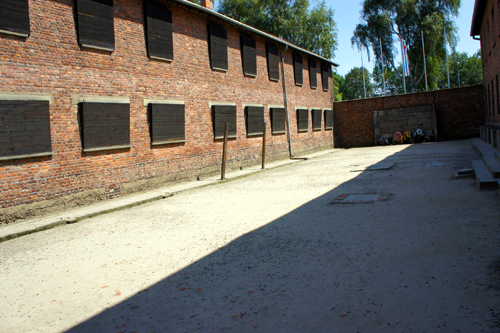
11. Our guide tells us of a story she heard from a friend, that a family of four, with two young children were led into the courtyard, and were asked to face the brick wall at the far end. The parents held hands with their older child, while the dad cradled the baby in his arms. Then four shots were heard, ringing through the barracks, and the family fell to the ground, still holding hands. Even the baby was not spared. Courtyard shootings were secretive and often times without reason, hence its almost secret existence. Most are not allowed here and few knew what it was for. The flowers here are a tribute to those who died here.
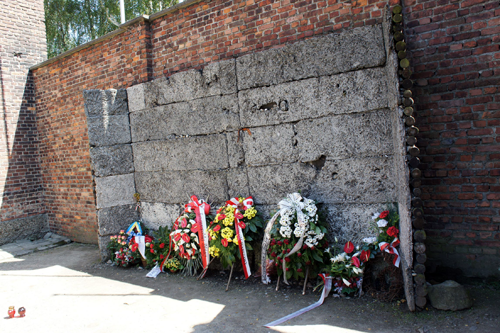
12. Outside one of the barracks, at a very public area, is a thin long plank, for hanging people. The Nazis sometimes do public hanging to serve as a scaring tactic to those who think of rebelling against them.
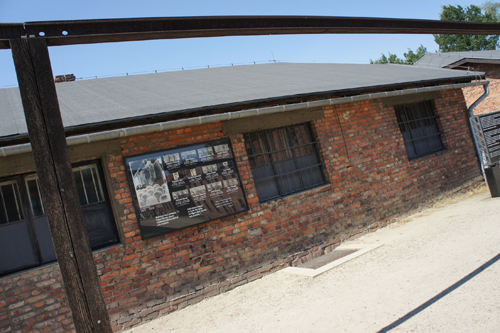
13. The most harrowing part of the experience at Auschwitz I is the gas chamber. It’s a musky small dark room with a chimney. Stepping into the chamber gives me a sense of doom, especially when you know how many innocent people have stepped into here and met with a painful end.
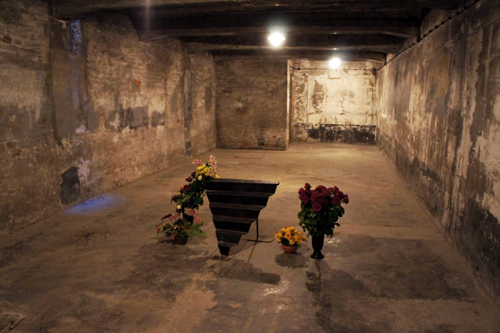
14. This is the very first gas chamber set up by the Nazis. The victims died within 20 minutes; the speed of death depended on how close the inmate was standing to a gas vent. Solid pellets of Zyklon B were dropped through the chimney into the room. When the door was finally opened, the victims were usually found half-squatting, their skin colored pink with red and green spots, some foaming at the mouth or bleeding from the ears.
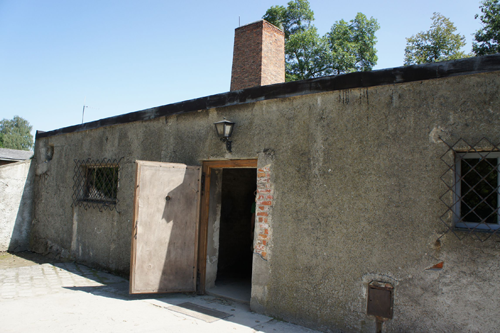
15. An incinerator is next to the chamber, so that when the doors are opened, they soldiers can just carry the bodies next door to be incinerated, almost immediately.
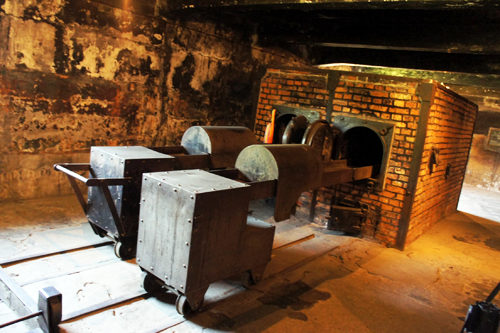
16. The next part of the tour brings us to Birkenau, the Auschwitz II-Birkenau camp. Construction on Auschwitz II-Birkenau, designed to be an extermination camp, began in October 1941 to ease congestion at the main camp. It was a larger camp than Auschwitz I, and more people passed through its gates than through Auschwitz I. It was designed to hold several categories of prisoners, on top of being an extermination camp. When construction began, prisoners from Auschwitz I had to make the daily 3km journey to the Birkenau site, even during the harsh winter. Many did not survive the ordeal, especially during winter.
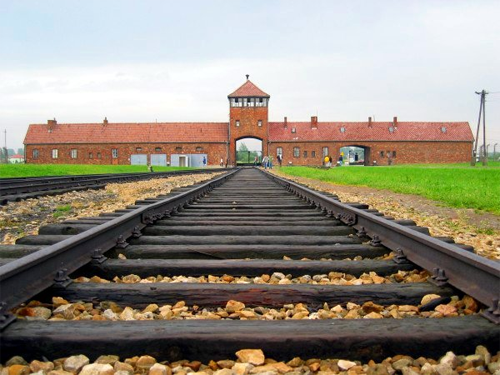
17. The camp was still under expansion when the war ended in 1945. 9000 over inmates were freed here. The camp was separated into the men and women camps.
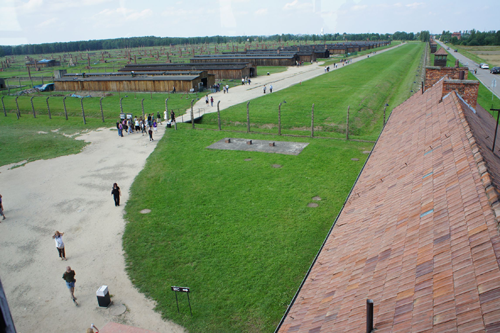
18. Inside the quarters, right down the center is a trough-like structure, made for the inmates to relieve themselves. Right next to the trough is a long sink, where the prisoners can “freshen” up, with what was flowing through the trough.
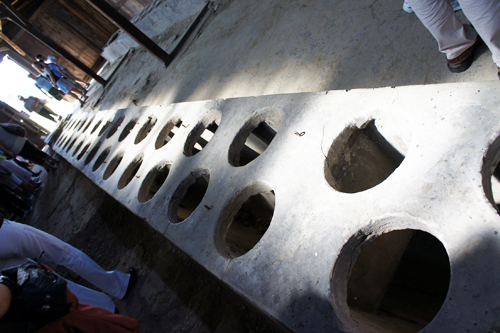
19. Each quarter is lined with rows and rows of bunk beds, made from nothing but wooden planks. Each bunk sleeps two inmates. The quarter is airy and has no heater; I can’t begin to imagine what it was like to live here in the dead of winter, with no blanket, no mattress, only the shivering barely warm body of your bunk-mate. At the pillar on the left, desolate carvings of inmates can be seen, messages left behind by many who did not survive the holocaust.
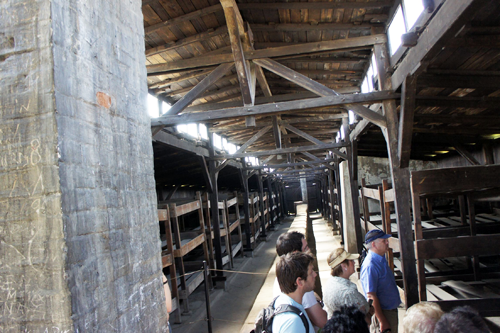
20. This is the infamous railway line, where victims were brought out of the trains onto the platform to undergo the selection process. Those deemed fit would be sent to hard labour, those determined unfit were sent to the gas chambers, almost immediately.
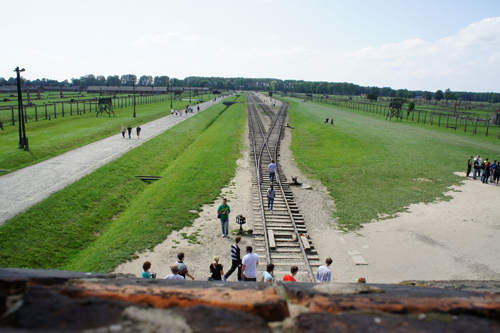
The tour of the concentration camp ends at the train tracks of the vast Birkenau camp, where you are free to explore the area before heading back to the bus. It’s a fitting end of the tour, giving you space to digest the horrors you’ve just witnessed, and perhaps reflect on your life a little. I know I did a little self-assessment whilst at Auschwitz.
There are a lot of disturbing spots at the camp that we were not allowed to photograph, but if you can leave the place without tears, you must be without feelings. I cannot begin to even imagine what the inmates must have gone through.
